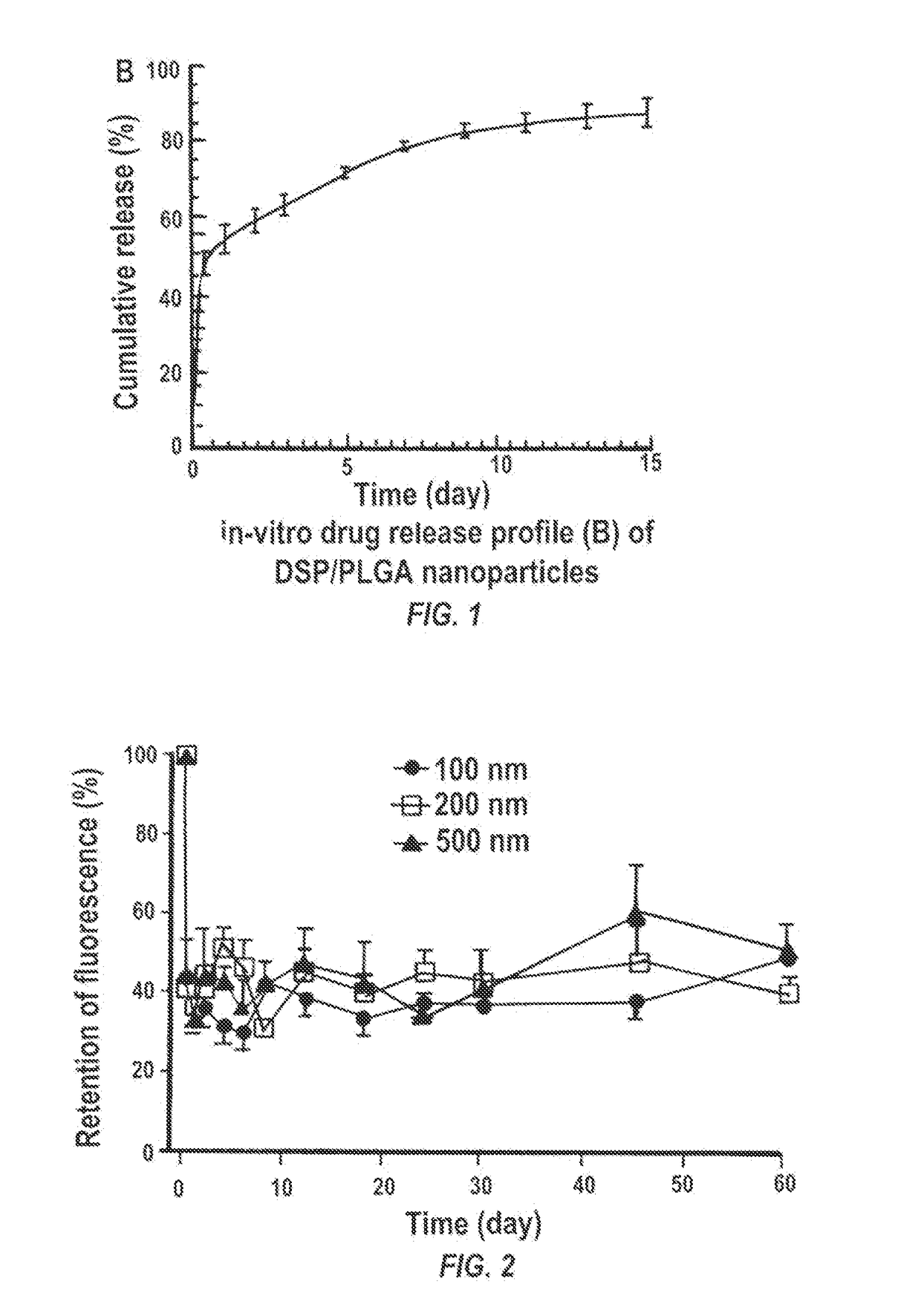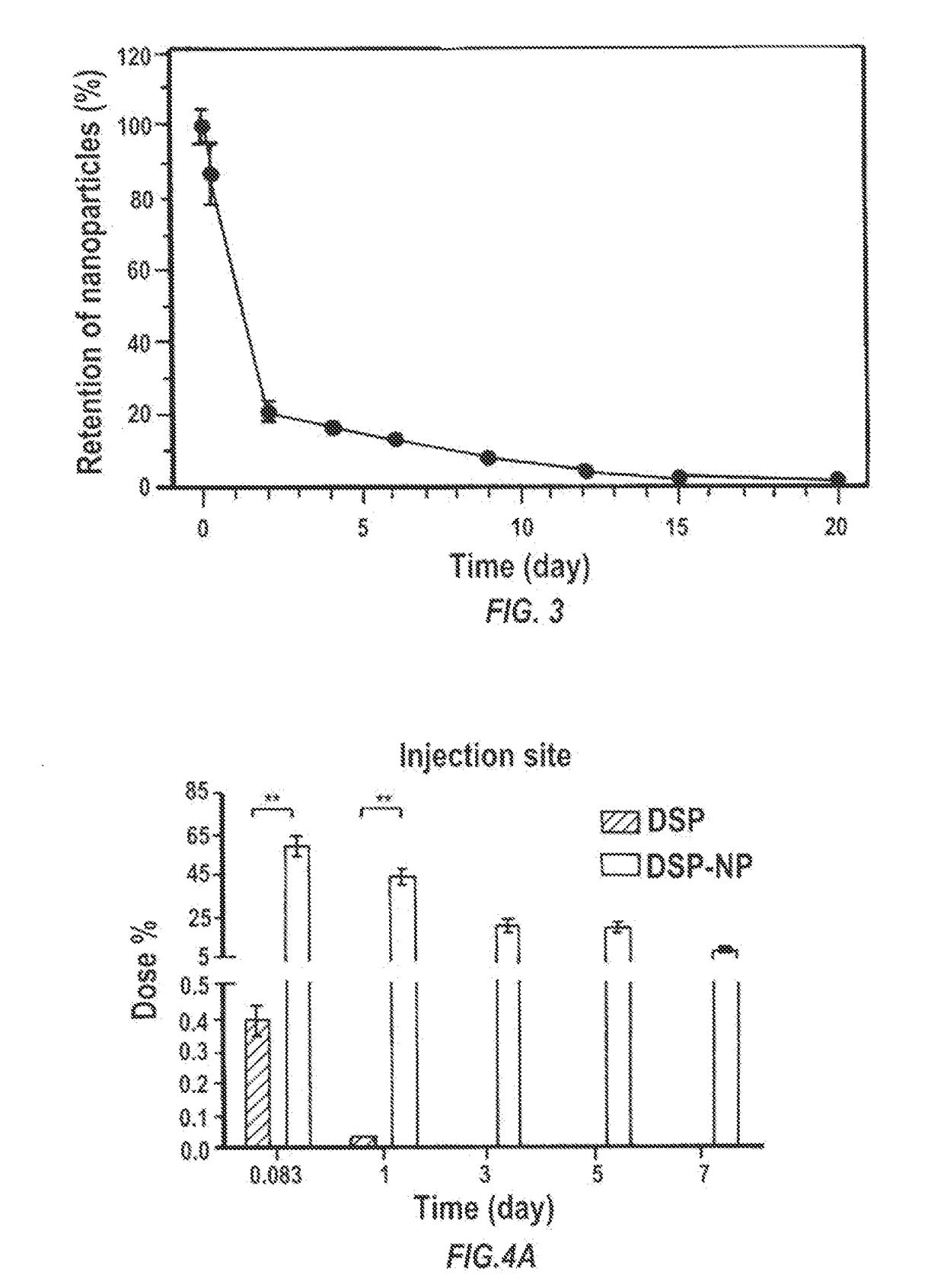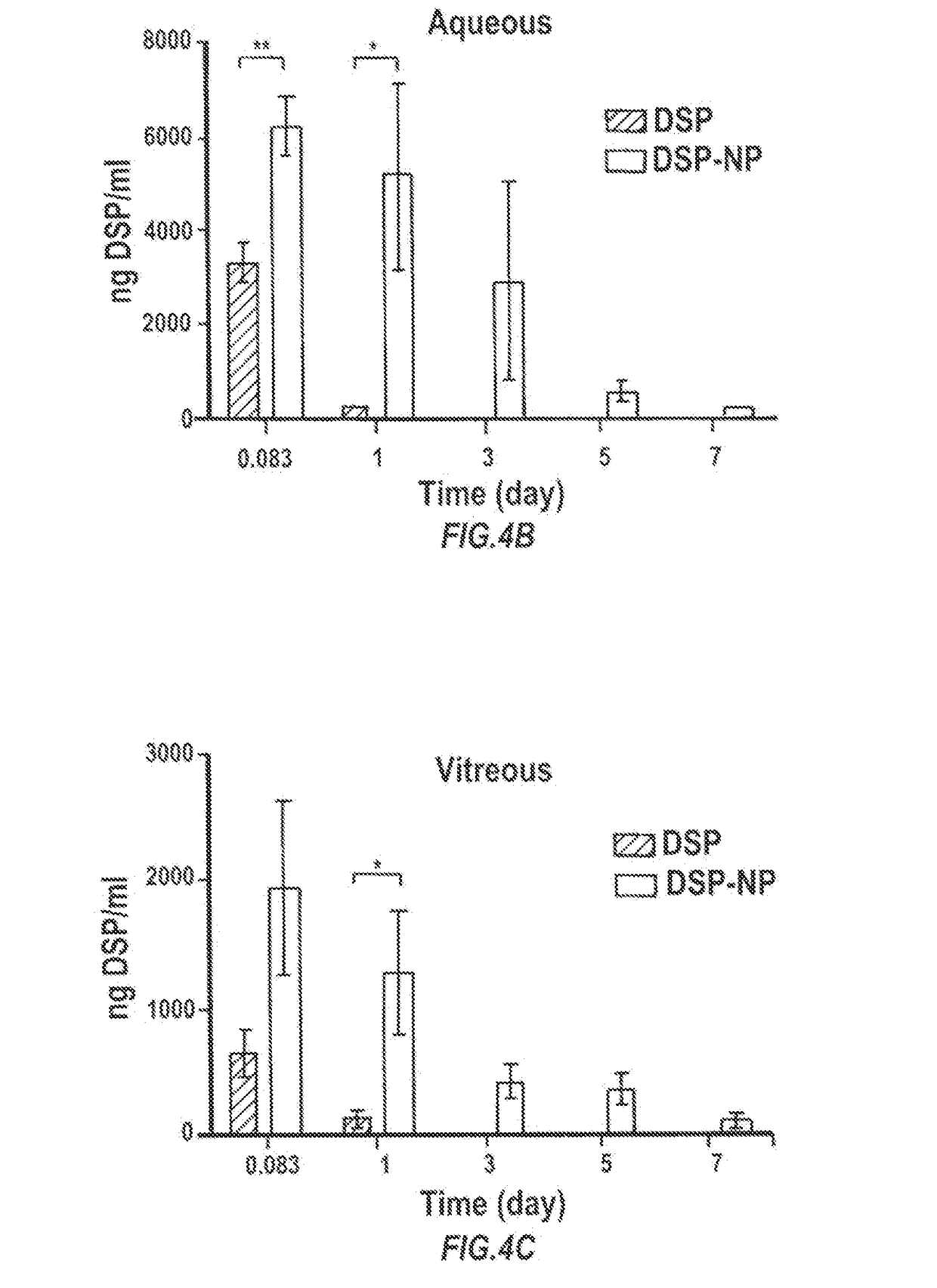Glucocorticoid-loaded nanoparticles for prevention of corneal allograft rejection and neovascularization
a technology of glucocorticoid-loaded nanoparticles and corneal allografts, which is applied in the direction of drug compositions, cardiovascular disorders, immunological disorders, etc., can solve the problems of poor patient compliance and severe side effects, and achieve rapid ocular clearance, poor patient compliance, and severe side effects
- Summary
- Abstract
- Description
- Claims
- Application Information
AI Technical Summary
Benefits of technology
Problems solved by technology
Method used
Image
Examples
example 1
on of PLGA Nanoparticles for Delivery of Glucocorticoid
[0119]Materials and Method
[0120]Preparation of PLGA Nanoparticles
[0121]Alexa Fluor 555 (AF555) cadaverine and Alexa Fluor 647 (AF647) cadaverine (Invitrogen, Carlsbad, Calif.), used here as fluorescent markers, were chemically conjugated to PLGA (MW 3.2 kDa, LA:GA=50:50) (SurModics Pharmaceuticals, Birmingham, Ala.). Nanoparticles composed of labeled or unlabeled PLGA polymers were prepared by a solvent diffusion (or nanoprecipitation) method. Briefly, 20 mg of the polymer was dissolved in 1 mL of tetrahydrofuran (THF), and added dropwise to 40 ml of ultrapure water under magnetic stirring at 700 rpm. After stirring for about 1 h, the solution was rotoevaporated for 30 min to remove the residual THF. The particles were collected by centrifuging at 10,000 g for 25 min, and resuspended in 0.2 mL of ultrapure water. For PLURONICS® F127-coated particles, the ultrapure water was replaced with 5% F127 aqueous solutions during the nano...
example 2
n of Neovascularization with DSP-NP
[0178]The biodegradable nanoparticle formulation that can provide sustained release of corticosteroid dexamethasone sodium phosphate (DSP) both in vitro and following SC injection in rats, demonstrated to prevent corneal allograft rejection in rats, was also shown to provide effective inhibition of corneal neovascularization.
[0179]Materials and Methods
[0180]Materials
[0181]Poly(D,L-lactic-co-glycolic acid; 50:50, Mw ˜3.4 kDa, acid terminated) (PLGA) was purchased from Lakeshore Biomaterials (Evonik, Birmingham, Ala.). Dexamethasone sodium phosphate salt (DSP) was purchased from MP Biomedicals (Santa Ana, Calif.). [3H]-labeled DSP was purchased from American Radiolabeled Chemicals (St Louis, Mo.). Pluronic F127 (a polyethylene oxide-polypropylene oxide-polyethylene oxide triblock copolymer, or PEO-PPO-PEO), triethanolamine (TEOA), ethylenediaminetetraacetic acid (EDTA) solution (0.5M), Zinc acetate dihydrate and all other organic solvents were purcha...
example 3
n of Uveitis
[0206]Uveitis is a sight-threatening inflammatory ocular disease. Corticosteroids are the most effective treatment of uveitis. However, intermediate and posterior uveitis affects the vitreous and the retina, which is hard to treat with topical steroids. Water-soluble steroid solution injected subconjunctivally is eliminated very quickly, requiring repeated injections to maintain therapeutic levels for a long period time. Nanoparticles (NP) loaded with dexamethasone sodium phosphate (DSP) provide high drug loading and prolonged drug release. These were tested for efficacy in a rat panuveitis model.
[0207]Methods:
[0208]Biodegradable Poly (lactic-co-glycolic acid), (PLGA) nanoparticles containing DSP were prepared using a modified solvent diffusion method. endotoxicin-induced uveitis (EIU) model was initiated 24 hours testing using IP injection of liposaccharide (LPS) to 6 week old Lewis rats. The ability of DSP-loaded nanoparticles to reduce inflammation in rats immunized b...
PUM
| Property | Measurement | Unit |
|---|---|---|
| diameter | aaaaa | aaaaa |
| diameter | aaaaa | aaaaa |
| size | aaaaa | aaaaa |
Abstract
Description
Claims
Application Information
 Login to View More
Login to View More - R&D
- Intellectual Property
- Life Sciences
- Materials
- Tech Scout
- Unparalleled Data Quality
- Higher Quality Content
- 60% Fewer Hallucinations
Browse by: Latest US Patents, China's latest patents, Technical Efficacy Thesaurus, Application Domain, Technology Topic, Popular Technical Reports.
© 2025 PatSnap. All rights reserved.Legal|Privacy policy|Modern Slavery Act Transparency Statement|Sitemap|About US| Contact US: help@patsnap.com



